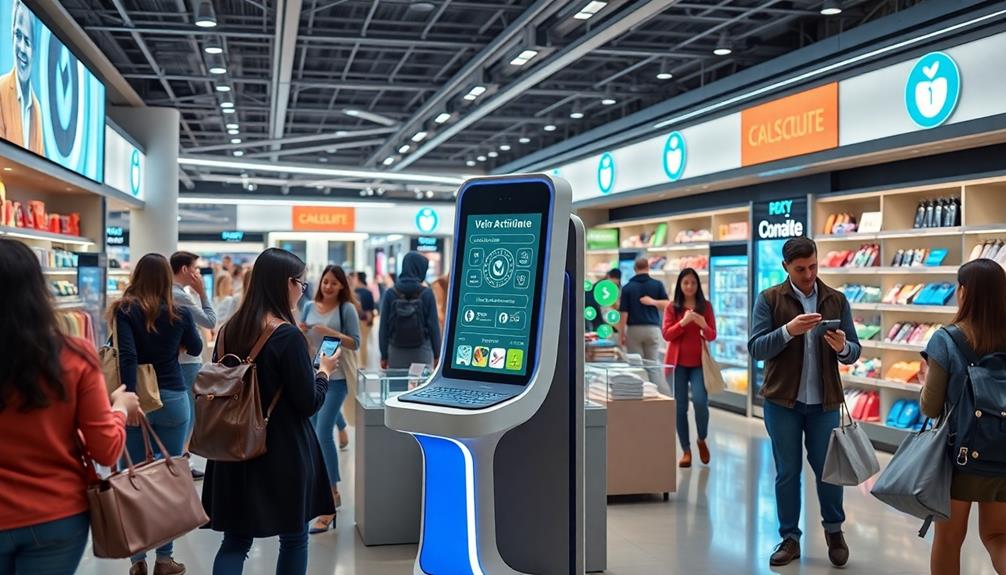Voice-activated payments are revolutionizing how customers shop, and you need to prepare your business for the future. By integrating voice payment technology, you can enhance transaction efficiency and improve customer satisfaction. Make sure your payment systems can link with voice-enabled devices, while incorporating robust security features like biometric authentication to address privacy concerns. Remember, 77.9 million consumers are expected to use voice payments in the U.S., highlighting a significant market opportunity. Embracing this technology not only streamlines operations but also positions you favorably in an evolving marketplace. Continue exploring more about how to effectively implement these solutions in your business.
Key Takeaways
- Understand the benefits of voice payment technology to enhance transaction efficiency and improve customer experience in your business.
- Ensure compatibility with popular payment systems like Venmo and PayPal for seamless integration of voice payment solutions.
- Invest in robust security features, including voice recognition and biometric authentication, to address consumer concerns about fraud.
- Educate consumers about voice payment technology to build trust and familiarity with its security measures and benefits.
- Stay informed about market trends and advancements in AI to leverage the growth potential of voice payments in your business strategy.
Understanding Voice Payment Technology
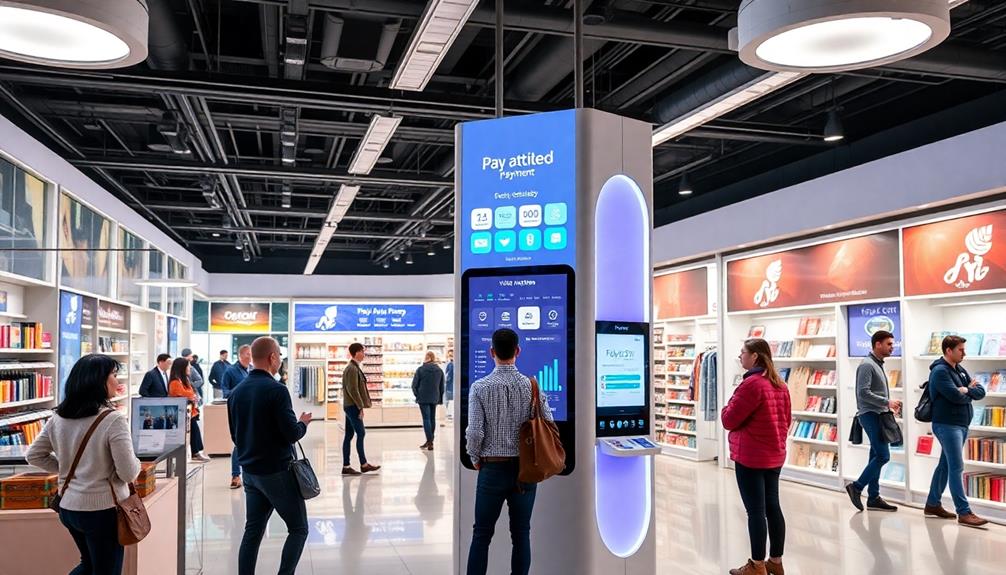
Voice payment technology is revolutionizing how you make transactions by allowing you to use simple voice commands to initiate payments. With this innovation, you can link your credit or debit cards to voice-enabled devices, streamlining payment processing without needing to interact with apps or screens. This ease of use enhances the overall user experience, making digital payments not only faster but also more accessible.
As cyber threats increase, incorporating AI security solutions will be essential for safeguarding sensitive payment information, ensuring that transactions remain secure and compliant with regulations. As you explore voice payments, you'll notice that major financial institutions, like Wells Fargo and JP Morgan Chase, are adopting this technology, emphasizing its importance in banking's future. Enhanced security features, including voice recognition technology and biometric authentication, help safeguard your transactions. These security measures are critical for addressing concerns around fraud detection and privacy, ensuring that your information remains secure.
The voice payment market is predicted to reach a staggering $164 billion by 2025, driven by advancements in AI and machine learning. As more consumers become familiar with voice technology, you can expect it to play an increasingly important role in your payment preferences. Embracing this trend will prepare you for a seamless and secure transaction experience.
Benefits for Businesses and Consumers

The integration of voice-activated payment systems offers significant benefits for both businesses and consumers. By adopting this innovative payment technology, you can enhance transaction efficiency, allowing your customers to complete purchases in seconds without the hassle of physical cards or manual entry.
This streamlined process not only reduces checkout times but also elevates the overall customer experience, making it more satisfying and convenient. Furthermore, embracing this technology aligns with the need for entrepreneurial mindset that emphasizes continuous learning and innovation.
With 45 million adults using voice assistants for shopping in 2021, there's a clear consumer preference for hands-free transactions. Embracing voice-activated payments positions your business to attract tech-savvy customers while improving accessibility for individuals with disabilities, aligning with the growing demand for inclusive financial services.
Additionally, the enhanced security features, including voice recognition and biometric authentication, minimize fraud risks, fostering greater trust among consumers.
As the voice payment market is projected to reach $164 billion by 2025, leveraging this technology can offer you a competitive advantage in our increasingly cashless society. By investing in voice-activated payments, you're not just keeping pace with market trends; you're also ensuring your business meets the evolving needs of customers.
Overcoming Security and Privacy Challenges
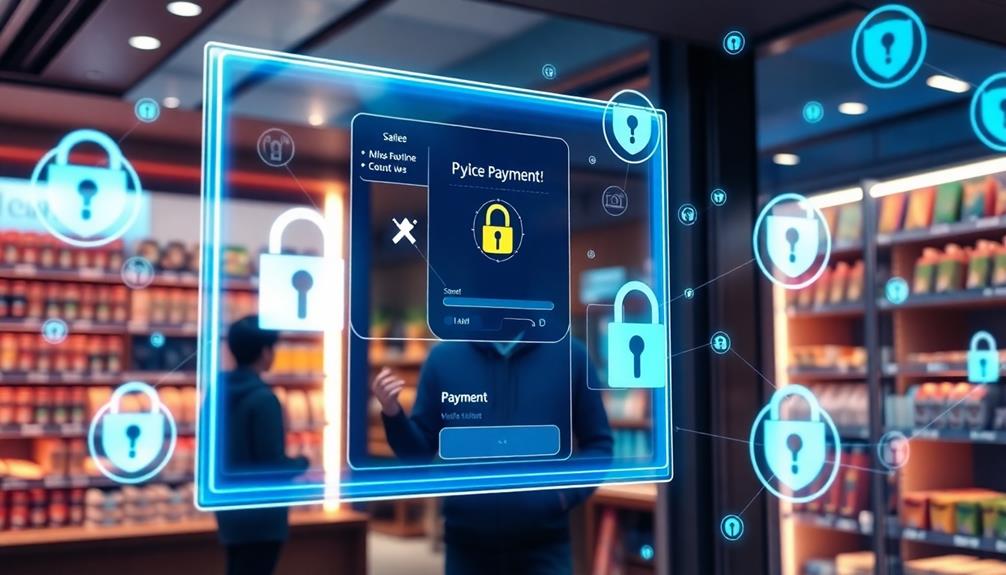
Adopting voice-activated payment systems comes with its own set of security and privacy concerns that can't be overlooked. Many users worry about unauthorized access to their financial information, which can hinder the widespread acceptance of voice payments.
Voice recognition technology, while convenient, can struggle with accent recognition, leading to misunderstandings and potential transaction errors. Ensuring robust security measures, similar to those employed in air purifier maintenance, can help mitigate some of these concerns.
To combat these issues, biometric authentication, particularly voice biometrics, can enhance security by using unique voice characteristics to verify identities. This greatly reduces the risk of impersonation when making voice payments. Additionally, as financial regulations evolve, they aim to address these security and privacy challenges, ensuring compliance with existing standards.
However, building trust in these systems is essential. Ongoing consumer education initiatives play an important role in helping users understand the security measures in place and how their data is protected.
Future Trends in Voice Payments
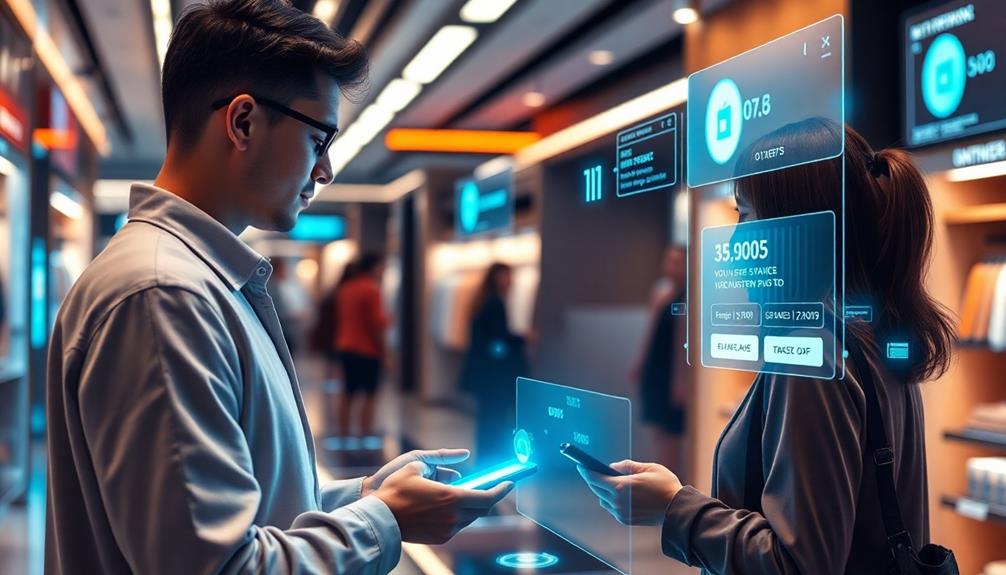
As we look ahead to the future of voice payments, the market is set to experience remarkable growth, with projections estimating its value at $164 billion by 2025. This surge highlights the increasing user preferences for seamless transactions, especially in mobile banking and digital banking environments.
By 2022, voice-enabled shopping was expected to reach $40 billion, showcasing the growing acceptance of voice commands in retail. Additionally, as businesses increasingly leverage personalized learning in classrooms to meet diverse customer needs, voice payment solutions will likely follow suit, adapting to individual preferences and enhancing user experience.
Advancements in AI and machine learning will greatly improve voice recognition accuracy, addressing challenges like accent recognition and enhancing overall user experience. As these emerging technologies evolve, you'll find that integrating voice payment solutions becomes more straightforward for businesses, paving the way for more intuitive customer service.
Moreover, a collaborative effort between tech companies and financial institutions is likely to drive innovation, making voice payments a standard feature across various platforms. Continuous consumer education will also play a vital role in building trust and familiarity with these payment solutions.
As you prepare for this shift, understanding these future trends will be essential in positioning your business to harness the potential of voice payments effectively.
Implementing Voice Payments in Your Business
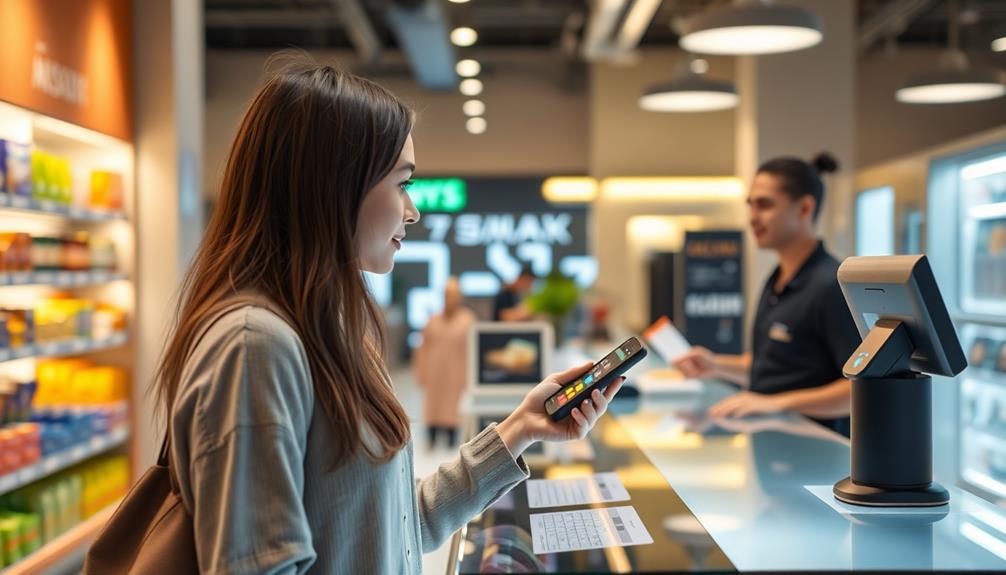
Implementing voice payments in your business can revolutionize the way you handle transactions, making them faster and more efficient. By adopting voice-activated payment systems, you'll streamline transaction processes, greatly enhancing the customer experience.
With 77.9 million US consumers expected to use voice payments, tapping into this growing market is vital. Additionally, understanding the local business operating times can help you optimize your payment systems during peak hours, guaranteeing that transactions are processed smoothly when customer demand is high.
For seamless integration, verify that your voice payments are compatible with existing payment systems like Venmo and PayPal. This familiarity will make it easier for customers to adapt to the new technology.
Additionally, incorporate robust security features, such as voice recognition and biometric authentication, to address any consumer concerns about fraud risks.
User education is essential in building trust and confidence in these innovative financial technologies. Provide training materials and support to help your customers understand how to use voice payments effectively.
Frequently Asked Questions
What Are the Benefits of Voice Payments?
Voice payments offer you convenience, speed, and security. You can complete transactions hands-free, reduce fraud risks through biometric authentication, and enjoy personalized experiences, all while making financial management more accessible and efficient for your lifestyle.
What Are the Voice Activated Payment Methods?
Voice-activated payment methods include services like Apple Pay and Google Assistant, allowing you to make purchases simply by speaking. These systems link to your accounts, ensuring convenience and efficiency without needing to manually enter payment information.
What Is Voice Activated Banking?
Voice-activated banking lets you manage your finances using voice commands. You can check balances, make payments, and transfer funds effortlessly, enhancing convenience and accessibility while streamlining your overall banking experience. It's truly revolutionary!
How Might Voice Based Solutions Affect the Customer Experience When Applied in a Financial Services Context?
Imagine effortlessly managing your finances while cooking. Voice-based solutions enhance your experience, enabling hands-free transactions, personalized advice, and faster service, making banking more convenient and secure, ultimately transforming how you interact with financial services.
Conclusion
As you embrace voice-activated payments, think of it as stepping into the future, much like Alice tumbling down the rabbit hole into Wonderland. This technology not only streamlines transactions but also enhances customer experiences. By addressing security concerns and keeping an eye on emerging trends, you'll position your business at the forefront of innovation. So, are you ready to unveil the magic of voice payments and transform the way your customers shop?

